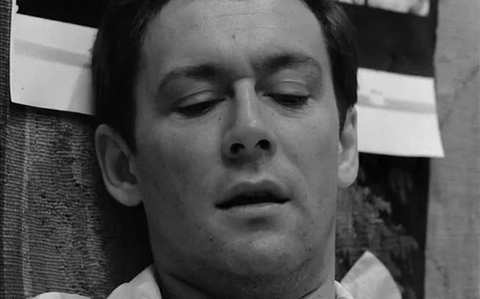
‘Maurice Ronet (1927-1983), about whom Eric Neuhoff said, he had “eyes for looking into chasms…” was a major figure in 1960’s French cinema. He continues to haunt our thoughts as the incarnation of the mysterious, upsetting, untenable man. Thirty years after his death, Maurice Ronet remains an enigma. He left his mark in many cult French films: Elevator to the scaffold (Louis Malle, 1958), Plein soleil (René Clément, 1960), La Piscine (Jacques Deray, 1969), and Raphaël ou le débauché (Michel Deville, 1971). His greatest role was in Le Feu follet (Louis Malle, 1963). This creature of the night, a fan of lavish parties, was close to the “Hussards” (Roger Nimier, Antoine Blondin) and was a true heartbreaker: “Alain Delon had groupies, Maurice Ronet had admirers”.
‘Ronet entered the Paris Conservatoire in 1944, where Jean-Louis Barrault was one his mentors. By the time he made his film debut at the age of twenty-two in Jacques Becker’s Rendez-vous de juillet (1949), in a role that was written specifically for him by Becker, he had little interest in pursuing an acting career. He tried his hand at ceramics, painting, writing and music (piano, organ). Throughout the early 1950s he made a living selling some of his paintings. (He was encouraged by Georges Mathieu and his work was once exhibited along with Jean Dubuffet). He also acted occasionally in small roles in the films of established French directors like René Wheeler and Yves Ciampi, with ambitions of possibly becoming a filmmaker himself. Gradually, however, he came to discover a freedom in acting, and a creative satisfaction that provided a synthesis of all that interested him in painting, literature and music.
‘Ronet first garnered acclaim at the 1953 Cannes Film Festival for his work in Jean Dreville’s Horizons sans fin and over the next few years, notably as the romantic lead in André Michel’s La Sorcière, 1956 and in Jules Dassin’s Celui qui doit mourir (He Who Must Die, 1957). It was at the presentation of La Sorcière, at Cannes, where he met a creative and an intellectual counterpart in Louis Malle. Two years later he made his international box-office breakthrough as Julien Tavernier in Malle’s first feature film, Ascenseur pour l’échafaud (Elevator to the Gallows, 1958). He is probably most known for originating the role of Phillipe Greenleaf in the French adaptation of The Talented Mr. Ripley (Plein soleil, Rene Clement, 1960).
‘His defining role reunited him with Malle and Jeanne Moreau in their finest collaboration: Le Feu follet (“The Fire Within”, 1963), in which he played an alcoholic writer, Alain Leroy. His indelible portrayal of depression and suicide earned him the highest critical acclaim of his prolific career. He was awarded France’s Étoile de Cristal (Crystal Star) and the prize for Best Actor at the 1965 São Paulo Film Festival; the film also won a Special Jury Prize at the 1963 Venice Film Festival. He was also a collaborator of Claude Chabrol. He appeared in four of his films including Le Scandale (1966), for which he won the Best Actor award at the 1967 San Sebastián International Film Festival & La Femme infidèle (“The Unfaithful Wife”, 1968). He co-starred with Alain Delon and Romy Schneider in La Piscine (Jacques Deray, 1969).
‘Ronet died in a Paris hospital in 1983 after a long battle with cancer. He was 55 years old. In his last appearance, Mr. Ronet portrayed the role of a thief in La Balance. The film, directed by Bob Swain, an American, won the Cesar, the French version of the Oscar, as the best French movie.’ — collaged
___
Stills
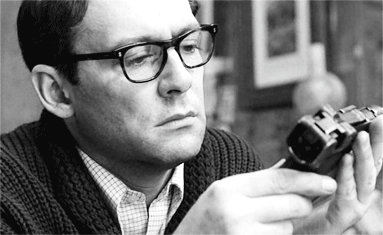









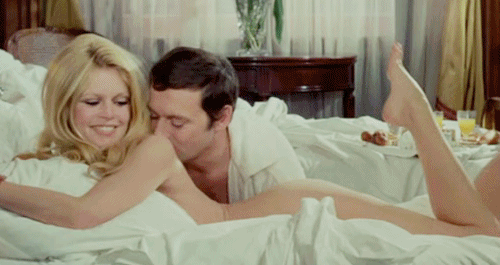









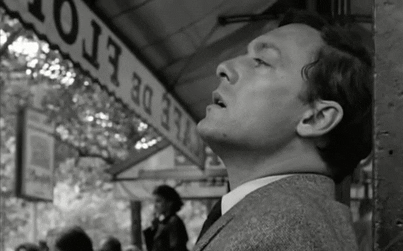































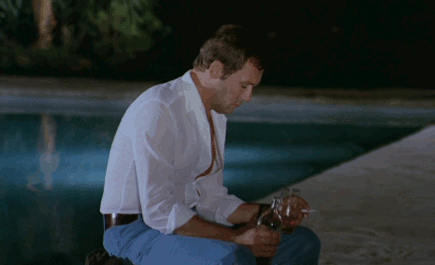


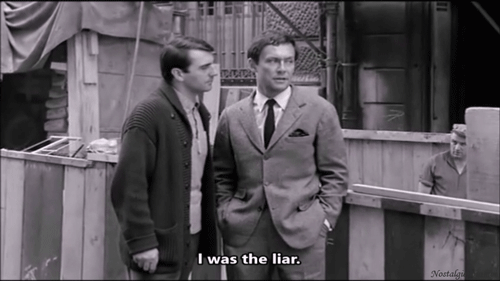




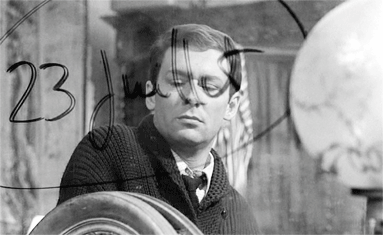
_____
Further
Maurice Ronet @ imdB
Maurice Ronet Filmography
‘Le mystère Ronet’
‘Maurice Ronet, l’autre Delon!’
‘Maurice Ronet, une hésitation devant la vie’
‘Maurice Ronet: le splendide désenchanté’
Maurice Ronet @ The Criterion Collection
‘Hommage à Maurice Ronet’ @ Cinematheque Francais
‘Maurice Ronet, le dandy désenchanté’
‘Maurice Ronet: la victoire du vaincu’
‘Hommage à Maurice Ronet, le cinéma de la droite absolue’
‘Maurice Ronet, «le désespéré hilare»’
‘Les larmes aux yeux de Maurice Ronet’
‘Maurice Ronet: feu follet incandescent du cinéma français
____
Extras
Interview
Interview (1957)
Hommage à MAURICE RONET
_______
Interview

It seems to me you chose to be an actor not only out of professional interest but as a way of life. Am I wrong?
No, you’re not wrong. I didn’t become an actor right away, though I made Rendezvous in July with Jacques Becker a long time ago. It was a complete accident and not what I wanted to do. No one knows at that age what they want to do, but I wanted something other than theater or cinema. Immediately after Rendezvous in July, I went to the south of France to do ceramics. I did many things before becoming an actor, which came along as a sort of conclusion. I painted. I wrote. And after a roundabout journey, I found in cinema a synthesis of all that interested me in painting and literature. You also become an actor by your behavior. In this profession, what you’re able to produce is always a result of your own life. Anyway, what’s interesting in the life and career of an actor is being offered roles that fit your personality and allow you to express your true nature. It’s an encounter between the character, the actor, and the man.
Does that happen often for you?
No, not often. But when things worked, it was there.
Can you give examples?
It happened on Purple Noon, and especially on The Fire Within. It happened on Elevator to the Gallows. It’s funny to see the similarity between Elevator to the Gallows, Purple Noon, The Fire Within and Time Out for Love.
What similarity?
The characters are similar.
How do you see your characters?
It’s like asking how you see yourself. When you’re an actor, people know more about you than you do yourself. All these characters belong to the same generation I do, a generation that’s a bit “transitory.” All these characters are heavy drinkers… have a sense of humor… and leave a bitter taste of hopelessness in your mouth.
Where do they come from? Are they the product of a certain Parisian way of life,
or something deeper?
Parisian, perhaps. They’re characters from a certain kind of bourgeois literature, like that of Drieu La Rochelle and others. They’re also a product of circumstance. This generation was 17 years old at the end of WWll: too young to have fought, too old to be just children. More and more, this generation merges into the following generation. For 10 or 15 years, a difference of five years really counted between those who were 12 at the end of WWII and those who were 17.
There was a big difference?
There was a terrible chasm but gradually, with passing time and various events they’re starting to melt together.
A generation is a lot of people.
Yes, and among them, one of our spokespersons, Roger Nimier, wrote really beautiful things about our generation. He always wrote the same thing: that it was a “sacrificed” generation, because we really didn’t have any myths. We really hadn’t had many to lean upon among our elders. You might say the future was ours in that sense.
Not much to believe in either.
That’s right.
Do you think there’s a crisis of faith? Do you think it’s important to believe in something?
Yes, certainly. We’re going through a moral crisis right now.
While making The Fire Within, weren’t you obsessed with the idea of suicide?
Not at all. Perhaps on a totally different level, but not as an automatic reflex. It’s not my job to obey the characters. They should obey me.
A typical actor’s answer. Perhaps that’s why you’d like to direct too.
Probably.
To make the characters obey you.
As I said before,the character is a framework in which an actor expresses himself. It’s not just a costume he wears.
_________________________
16 of Maurice Ronet’s 103 roles
_________________
André Michel La sorcière (1956)
‘La sorcière (The Blonde Witch) is not a horror movie or a movie about witches doing evil things. Marina Vlady plays a young woman who has been isolated with her grandmother by villagers in a remote place in Sweden. Consequently, her knowledge of civilization, even village life, has been thwarted. She lives in a cabin beside a lake in a deep woods. The villagers thought her mother a witch and think she is a witch, and she does indeed have a power. It is nothing to fear, but the villagers are very fearful and suspicious, not only of her. They are superstitious in general. Maurice Ronet is an engineer who comes to supervise the building of a canal. He and Vlady fall in love, but it leads to tragedy. This is a captivating and romantic story, filmed in a realistic way but with generous helpings of the visual mystery of nature and this nature girl. Ronet, who wants to marry Vlady, is up against an obstacle and he does not know quite what it is. He attempts to overcome it in a straightforward way, and Vlady cooperates, but it is not meant to be. As an engineer who scoffs at superstition and is not a “people” person, he does not take into account the culture he has entered.’ — msroz
the entire film
_________________
Jules Dassin He Who Must Die (1957)
‘Celu Qui Doit Mourir (He Who Must Die) represented director Jules Dassin’s first professional collaboration with his future wife, Greek actress Melina Mercouri. Filmed on the island of Crete, the story concerns the efforts by the townspeople to stage their annual Passion Play. The priest in charge of the play, anxious not to rock the boat with the occupying Turks, refuses aid and comfort to a rebellious priest from a battle-scarred village. But three townspeople do their best to help the visiting cleric, an act that splits the town right down the middle and forces the previously benevolent Turkish overlord to take decisive action. Melina Mercouri offers a dry run of her Never on Sunday character as the town trollop. Co-staring Maurice Ronet. The best adaptation ever made in a Nikos Kazantzakis novel, far superior to Zorba and The Last Temptation.’ — collaged
Excerpt
___________________
Louis Malle Elevator to the Gallows (1958)
‘François Truffaut once wrote, “All of Louis Malle, all his good qualities and faults, was in Elevator to the Gallows”—a statement that, even given French film criticism’s traditionally high tolerance for the counterintuitive, pretty unambiguously qualifies as, well, false. What’s most striking about Elevator to the Gallows, in fact, is that Malle, having made this almost insolently proficient Série noire thriller, never went anywhere near the genre again, and for the rest of his career rarely displayed much interest in the sort of tightly controlled visual and narrative style he uses with such mastery here. It would be more accurate, I think, to say that “all of Louis Malle” is all that is not in Elevator to the Gallows—or, for that matter, in any individual Malle movie—but is, rather, what lies in the spaces between his films, in the habit of renunciation that required him, it seems, to turn his back immediately on whatever he had just accomplished.’ — Terrence Rafferty
Excerpt
Excerpt
__________________
Rene Clement Purple Noon (1960)
‘If René Clément’s Purple Noon (1960) is not a guilty pleasure, it certainly feels like one. But before getting to the guilt, a word about the pleasure. Aside from anything else, it is a film that lingers in the mind as an irresistibly satisfying slice of worldly enjoyment. The original title, Plein soleil, conveys the pervasive power of that enjoyment, with its suggestion of the Mediterranean sunlight in which so many of the film’s scenes are baked. When it first came out in America, Purple Noon was like an advertisement for a life of luxurious sensuality, with hints of La dolce vita–style decadence and New Wave–style modishness, pristinely opulent hotel rooms and lobbies, and large helpings of sand and sun. The passage of time has only accentuated that allure, since the Italy we sample here in such generous detail is a vanished tourist’s dream, underpopulated and unpolluted, a paradise for footloose Americans: the seaport waterfronts teeming with fresh-caught fish, the bodies bronzed from long and carefree afternoons in the sun, the luscious blues and greens of a sea made for open-ended yachting excursions.’ — Geoffrey O’Brien
Trailer
Excerpt
Excerpt
__________________
Louis Malle Le feu follet (1963)
‘Le Feu follet (a.k.a. The Fire Within) is the bleakest and possibly greatest of Louis Malle’s films, one that confronts the highly problematic issue of suicide with a rare insight and directness. Throughout his career, Malle made a habit of courting controversy and often dealt with what were (and to some extent still are) taboo subjects: marital infidelity, incest, child prostitution, Nazi collaboration and the Holocaust. It was his unstinting sincerity as an auteur, coupled with a profound desire to understand human nature, that enabled Malle to confront the most difficult subjects without alienating his audience, and there are few subjects as controversial and misunderstood as suicide.’ — filmsdefrance.com
Opening scene
Excerpt
___________________
Carl Foreman The Victors (1963)
‘Two years after he produced The Guns of Navarone, Carl Foreman returned to the battlefield with The Victors, an altogether different sort of war film. Gone is the all star derring-do; in its place, a realistic – at times brutally so – portrait of the liberation of Europe. Even by the standards of most war films, it’s an episodic picture: keeping up with the various characters requires concentration. Cumulatively, however, the results are extremely powerful: the horror of war is shown not in the combat scenes but in the things that war obliges people to do. This is the war as it was really fought, shorn of Hollywood heroics and sentimentality.’ — James Oliver
Excerpt
__________________
Marcel Carne Three Rooms in Manhattan (1965)
‘A New York based film that has been forgotten from the filmography of De Niro is the 1965 French drama, “Trois Chambres à Manhattan” also known as “Three Rooms in Manhattan”, where he played an uncredited part as a client sitting in a diner. Adapted from a novel by Georges Simenon, Three Rooms in Manhattan tells the story of a young French actor, François Combe played by Maurice Ronet when he moves to New York to work for a television company. One evening whilst in a bar, he meets an attractive young woman, Kay Larsi played by Annie Girardot. She is as lost and unhappy as he is, alone after her friend and flatmate Jessie left her. François and Kay become lovers, initially renting a room in a hotel before moving into François’s apartment. When François finds out that Kay is not only the wife of a diplomat, but also a wealthy countess who ran off with a gigolo, he begins to have doubts about the relationship.’ — otsoNY.com
Robert De Niro’s first screen performance
Excerpt
__________________
Claude Chabrol Le Scandale (1966)
‘This stylish psychological thriller from Claude Chabrol has such labyrinthine plotting that many critics mistakenly called it too confusing. Christine Balling (Yvonne Furneaux) tries to convince Paul Wagner (Maurice Ronet) to sell his venerable champagne business to an American company. She asks her husband Chris (Anthony Perkins), who is also Wagner’s friend, to help her to persuade the stubborn Paul. While on a trip to Hamburg, Wagner picks up a German girl in a restaurant. The next morning, the girl turns up dead, and Paul can’t remember if it was he who killed her. Chris, who becomes aware of the incident, promptly tells his wife, and she tries to blackmail Wagner into signing a deal with Americans. Later, another woman turns up dead, and again Paul was the last person who saw her alive. He begins questioning his own sanity.’ — Yuri German, Rovi

______________________
Claude Chabrol Line of Demarcation (1966)
‘The Germans have already invaded France. In the winter of 1941, in a village in the Jura Mountains, the Loue River divides Free France and Occupied France. The bleak grayness of Jean Rabier’s immaculate black-and-white cinematography in writer-director Claude Chabrol’s La ligne de démarcation expresses the sadness of the French people, and the defeatism of some, such as Pierre, the Count de Damville (Maurice Ronet, superb), a military officer just released by his German captors. But just as the river divides Unoccupied France and Vichy France, it also divides the attitude of the people: Pierre’s English-born wife, the Countess de Damville (Jean Seberg, acting amateurishly—the film’s one weakness), maintaining hope that France can reverse its defeat, aids Resistance fighters. Perhaps the highest value of the film is the density of its communal portrait—the interrelatedness of its inhabitants. For the most part, it is an army of civilians living their diminished lives and keeping hope alive. The film’s finale is immensely moving. At the same time, it restrains itself from employing the cliché that the outcome of the war provides.’ — Dennis Grunes
the entire film
_________________
Silvano Agosti Garden of Delights (1967)
‘A head-on attack from Agosti towards the Catholic education , the main character Carlo ( Ronet ), spurred by flashbacks, lives so painfully, feeling, for example, that he was raised by his parents in such a way that soon he started feeling like a trained dog, one of those dogs which sometimes are asked to walk on two legs. More recent memories that haunt him are those of his wedding day ( they are contributions to Agosti’s subordinate contemptuous film-statements about Catholic marriage and family – because at present his wife is ‘already’ pregnant – parallel to those of his colleague Ferreri’s film Harem of the same year .. Ferreri who years before made another heavily censored film, The Wedding March). The Garden of Earthly Delights by Bosch could be the metaphorical utopian ‘departure and arrival’ ideal station for Carlo, who is a guy that, together with his ideas of what he abhors about himself and the others, will always keep with him an incurable urge to flee. Anyway: censorship unfortunately took 25 minutes off from this film … which is way too much, so I will not give it any ratings.’ — jimmymarkum
Excerpt
Excerpt
_________________
Jean Aurel Les Femmes (1969)
‘This film maintains interest because of it’s duality of purpose and accomplishment. It is, at once, a witty “battle of the sexes” repartee vehicle, while making it’s essential points via humor, instead of using more direct means. It does this while portraying the film’s protagonist as a shallow, womanizing predator, thus many female viewers, recognizing the type, will resent this film. But, throughout the film, the male anti-hero is disarmingly honest as to his superficiality, and his lack of commitment intentions with his many female “love interests,” which, of course, poses a distinct challenge to them all, and makes him all the more desirable and successful in his dalliances. Bardot, nearing 35 when this film was made, is nevertheless coquettish and cute, and no pushover for the man’s sexual aggressiveness, giving her an independent ambiance and a social maturity aspect not readily found in her earlier films.’ — bonfirexx
Excerpt
Excerpt
___________________
Jacques Deray The Swimming Pool (1969)
‘Erotic languour turns gradually into fear and then horror in this gripping and superbly controlled psychological thriller from 1969, now on rerelease. Alain Delon and Romy Schneider play Jean-Paul and Marianne, lovers who appear to be gloriously happy in a sumptuous villa in the south of France: but more reflective moments reveal them both to be anxious and unfulfilled. Then Marianne’s ex-lover shows up for a visit: breezy record producer Harry (Maurice Ronet) who makes no secret of his continued desire for Marianne. Meanwhile, Jean-Paul is fascinated by Penelope, the sexy teenage daughter Harry has brought along. The pool itself is the centre for all sorts of sensuality and something in the very lineaments of the pool itself creates their own awful destiny: it is a primordial swamp of desire, a space in which there is nothing to do but laze around, furtively looking at semi-naked bodies.’ — The Guardian
Trailer
_______________
Léonard Keigel Qui? (1970)
‘This is basically an Italian giallo with a much more “A-list” cast than usual, namely German beauty Romy Schneider and French actor Maurice Ronet, both of whom were usually in much more prestigious projects like Bocaccio ’70, Innocents with Dirty Hands, Beau Pere, etc. The third lead, however, is Gabriele Tinti, who did some of his best work in gialli like Tropic of Cancer and Death Occurred Last Night, but he is most well-know for the even sleazier, low-rent softcore porn he later appeared in with his wife Laura Gemser. The plot involves a woman (Schneider) who is in an abusive relationship with a violent cad (Tinti). While driving recklessly, their car goes off a seaside cliff. The woman is mysteriously thrown clear, but the man’s body can not be found. The nice-guy brother of the man (Ronet) suspects foul play, and he tries to get the woman to confess, but winds up falling in love with her. . . There is a nice (if pretty predictable) twist near the end, but the VERY end is extremely weak and padded out with strange polarized stills of the attractive cast members. I strongly suspect the version I saw of this was cut for some unfathomable reason. Besides the abruptness of the ending, Schneider has about five brief nude scenes, but nothing that really goes beyond brief (a crying shame if you’ve ever seen HER nude). There are also these strange comic longeurs with both characters getting sloppy drunk, and Ronet throwing water balloons from his apartment window at passer-byers(?).’ — lazarillo
Excerpt
______________________
Roger Vadim Don Juan (Or If Don Juan Were a Woman) (1973)
‘A veritable orgy of campy decor and even campier dialogue (“If there’s one thing I can’t stand, it’s being treated the way I treat other people!”) this would-be erotic extravaganza stars an ageing and puffy Brigitte Bardot as a jet-set nymphomaniac – who fancies herself a reincarnation of the 16th century Spanish seducer. Both the film and its heroine labour under the delusion of being a whole lot sexier than they really are. The “plot” (I use the term loosely) involves Bardot confessing to a dishy priest (Mathieu Carriere) how she drove one of her lovers to suicide. Half an hour into this mess, and you’ll know how the poor b**tard felt. Undaunted by the tedium around her, Bardot seduces a married lawyer (Maurice Ronet) and they jet off to Sweden, supposed Paradise of Free Love. (Never mind if the Bacchanalian revels we SEE are no more steamy than your average Sunday school picnic.) Granted, Don Juan ’73 is an abysmal movie, but there is fun to be had. Birkin looks heart-meltingly gorgeous and Ronet even tries to do some acting – though why he should bother when nobody else does is one of life’s mysteries. Anyone who shares my weakness for bouffant hairdos, zebra-skin rugs and purple velvet flares will probably enjoy it. Still, the final impression is of Vadim, after 15 years as a high-style provocateur, struggling to keep up with a Flower Power audience. Is there any sight sadder than hipster who’s been out-hipped?’ — David Melville
Excerpts
Excerpt
Excerpt
_________________
Terence Young Bloodline (1979)
‘When Bloodline was released in 1979, a major magazine review pointed out that in the course of the story, ostensibly for failure to pay a gambling debt, a character’s knees are nailed to the floor. The critic then went on to say, `This is what Paramount Pictures is going to have to do to get audiences to sit through this picture.’ There aren’t enough negative things to say about this abomination of a movie. The meandering, incoherent story is hampered at every turn by ludicrously bad production values. The direction, the inept blocking of the scenes, the lighting, the sets – in every case conspires to make the results look cheap and hollow. The movie is really a miracle of dreadfulness. The following is one of thousand small crimes against cinema throughout the picture: There is an explosion in the street. This is conveyed by a flash of light on the actors in the scene and a sound effect. The next shot, meant to be the view of the street from the window, is a still photograph beneath which someone is apparently waving a lit piece of paper. Just before the cut from this scene, the photograph actually starts to buckle from the heat of the flame. And the filmmakers left this in the film! The real crime against cinema is the fact that the name of Audrey Hepburn is associated with this repugnant film, a monstrosity so putrid, one wishes every single copy of it would magically disappear.’ — M. David
Excerpt
___________________
Bertrand Blier Beau Pere (1981)
‘Beau Pere begins by introducing us to Remy (Patrick Dewaere), a sadsack restaurant piano player whose marriage is falling apart. For the last eight years, Remy has been married to Martine (Nicole Garcia) and has cared for her daughter, Marion (Ariel Besse), as if she was his own. But Martine is fed up with his lack of earning power and ambition and is ready to leave him. Then, as she’s going to work following an argument, she is killed in an automobile accident. Remy is left to care for Marion alone. His initial reaction is that the girl should live with her alcoholic father, Charly (Maurice Ronet), but she resists the idea. And, although Charly pays lip service to wanting his daughter with him, he eventually allows her to remain with Remy. It soon becomes apparent, however, that Marion’s reasons for wanting to stay with Remy have little to do with the affection of a daughter for her father. He has become the object of her sexual fantasies, and she makes it apparent that her feelings go far beyond what is proper. Equally attracted to her but unwilling to admit it, Remy puts up token resistance, but his attempts to ward off Marion are halfhearted at best. (After all, if he really wanted to put a stop to the situation, he could demand that she live with Charly.) Eventually, he gives in and a sexual relationship is consummated. In the end, Blier does not give us an overwrought conclusion featuring histrionics, threats, recriminations, and police action. In fact, the resolution is handled with chilling civility, and the last scene – which strongly hints that history may repeat itself – is Beau Pere‘s most disturbing moment.’ — reelviews.net
the entire film
*
p.s. Hey. ** David Ehrenstein, Good old Thing. ** Sypha, Hi. Well, yes, they are, but I suppose the mechanics in them are the culprits. I guess you guys have no control over the B&N soundtrack. Can’t slip in a personalised mix. New Mauve Zone Recording! And it’s you! And it’s covers! This I have to hear. Everyone, the mighty and multi-faceted being James ‘Sypha’ Champagne has … and here I turn you over to him … ‘released a new album on Mauve Zone Recordings yesterday, CROOKED LOOKING GLASS, which is essentially an album of cover songs, some of which I’ve done over the years, a few which I recorded specifically for this project.’ From ‘Just Can’t Get Enough’ to ‘Nibelungen’ … that’s quite a range you’ve got going on there. I will strap on my earbuds. ** daniel, Hi, Daniel. Okay, cool, will do. I’ll try texting you today. Welcome! ** Armando, Yes! It’s the annual heaven or hell period on the blog depending on viewers’ curmudgeonliness. ** _Black_Acrylic, Hi. Well, it does sound like it/he has a reasonably sophisticated and perhaps price enhancing mechanism, assuming its/his ability to both shake and bend over to retrieve its lopped-off arm is somewhat realistic. Ah, the short story class is back. Wow, I wouldn’t know what to do with that painting. Good luck. Hope to see the results somehow. ** Misanthrope, The season is swamping us as we type. Dude, I know from my researching that there are at least a few haunted houses of seeming good quality within reach of you, so this year you have no excuse. I can help you pick the lucky house, if you like. I’m a seasoned vet. Last chapters are a needy thing, but I know you can slam dunk its necessities. ** Steve Erickson, I think that must be the idea, yes. Thanks for catching the bad link. You must be the only one who tried it, ha ha, boo hoo. I’ve fixed it. Can not fucking wait to see the new Pedro Costa! That’s great to hear. ** cal, Hi, man! Oh, spottiness is perfectly okay around here. Yeah, right? On the putrefying body. I wonder what it actually smells like, not that I necessarily think I want to actually know. Like a Pop Tart, I’m guessing. I’m good, thanks. Busy with stuff, the absolute usual. And you? ** alan, Hi, man. Oh, I definitely will see it one way or another. Thanks again. I’m obviously very glad to hear you’re writing. All the very, very best. ** Right. I’m doing the blog number on the fascinating and yet seemingly fairly forgotten — especially, but not exclusively, outside of France — actor Maurice Ronet. Absorb what he was up to today? That’s my suggestion. See you tomorrow.




 Now available in North America
Now available in North America 
Great Maurice Ronet Day. “It is for the characters to obey me” is the key to his acting power, particularly in “Le Feu Follet”
Nothi g much about his personal life here but I happen to know that after she broke with Godard Anna Karina (who turned 79 yesterday) was involved for a number of years with Maurice Ronet.
Maurice Ronet’s performance in the Fire Within is something quite remarkable. I don’t remember ever feeling so strongly about a character in a film. I can vacuum up the pain within him so clearly. One really feels the misery and the exhaustion in Ronet’s performance. One of my favorite films as well.
Dennis, thanks for the shout-out… the album was kind of inspired by THROUGH THE LOOKING GLASS by Siouxsie & the Banshees (which in turn was inspired by Bowie’s PIN-UPS). It’s kind of a nod I guess at some of the groups that have inspired my own music over the years, you could say, though there are a few omissions (no Ministry, Velvet Underground or Joy Division, for example).
Still not sure what I’ll do for the big 50th release. I did a big compilation album for the 40th release not too long ago, so that’s out. One idea I’ve pondered is doing a new Boy Destroyer album (as there hasn’t been a true new BD album since 2008), as the very first MZR release was an album done under that banner… but I can’t really do that kind of aggressive screaming vocal performance anymore, my vocal chords just can’t deal with that kind of abuse, ha ha. Another idea I was considering was maybe a book of lyrics, which I could release both as a free PDF on the netlabel and also self-publish on Amazon or whatever for those who would want a physical copy, as I’ve written quite a lot of song lyrics over the years, both for Sypha Nadon and Boy Destroyer (you might remember that GRIMOIRE, my 1st collection, was originally a PDF released on MZR, so there is a historical precedence for such a thing). We’ll see, I’ll have to think it over.
I’m happy to report that The Call zine will feature in Dundee Zine Fest on Saturday 9th November at Roseangle Church just over the road from my flat. Today Katy of the Edinburgh-based Blood Bath zine confirmed she’ll also attend the DZF event. Which could be significant as I want to apply for Creative Scotland funding on October 8th, and some kind of potential collab can only help my cause. I’ll try and figure out how I might develop this project before the funding deadline rolls around.
Saw the new Peter Strickland horror In Fabric on DVD last night and I must say, it’s defo my fave of this year so far. A heavily stylised and dadpan comedic gem, not one to be missed.
Cool, IN FABRIC opens in the US in December. I’m really looking forward to it!
I got feedback on my FIGHT CLUB essay for the Quietus. The editor wants me to take most of the references to the real-life alt-right and focus on a queer reading of the film, drawing directly on the text rather than throwing in references to the Proud Boys, Jordan Peterson, studies about Trumpism, etc. I’ve made some preliminary deletions and written 2 new paragraphs that go along those lines. I am going to read FIGHT CLUB 2 and see what that suggests – it seems to me that the heterosexuality presented in the film is really incomplete and unconvincing, and maybe there’s something hopeful about the possibility for love in its queerness, even if that goes unfulfilled (and the film and book are too pessimistic to open up the possibility for its fulfillment.)
It’s Bresson’s 108th Birthday
Dennis, Ronet is new to me (of course!), but I can tell you that at first glance I love his look.
Yes, no excuses, hahaha. My thing will be getting LPS and Kayla on board, which shouldn’t be a problem.
Thanks! Yeah, I’m a tackle this shit very soon -a going-over of the most recently finished chapter and then the last. Then…another time or two for the whole thing. And then…voila.